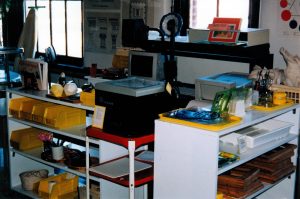 It is safest to assume that all art made by a child is the best she/he can do at that moment. It is to be taken seriously just as one accepts a child’s present reading skills. Our observations of each child guide us in preparing new experiences that will hopefully increase a skill or understanding for that person and others. View the art made as an expression of the child within his/her level of development.
It is safest to assume that all art made by a child is the best she/he can do at that moment. It is to be taken seriously just as one accepts a child’s present reading skills. Our observations of each child guide us in preparing new experiences that will hopefully increase a skill or understanding for that person and others. View the art made as an expression of the child within his/her level of development.
Use “I” statements when responding to a work of art brought to you for your approval. The “I” statements concerning what you see and enjoy will continue the conversation. Active listening helps people to communicate clearly; so will active looking. If you ask the child what he/she likes best about the artwork, you will also learn something about the child. It will also start the process of her/his own self evaluation. Older students can write their explanations, observations, and evaluations and even choose to display them with their work.
It is important to children’s future growth that all they produce is accepted. Often children are critical of their own work because it does not look right (realistic) to them. Their work may be excellent within their developmental level and still not be accepted by them. While they are learning to read, they seem satisfied with their progress or even unaware of it. Few young readers of four or five are critical of their inability to read a high school text book. With art, it is important for children to see a timeline of the history of their own visual development and the work of other children. Our lessons lead to spontaneous writing and reading. I continue to question what lessons need to be given and when, so children can spontaneously choose to draw the three dimensional world – real or imagined– on a two dimensional plane.
